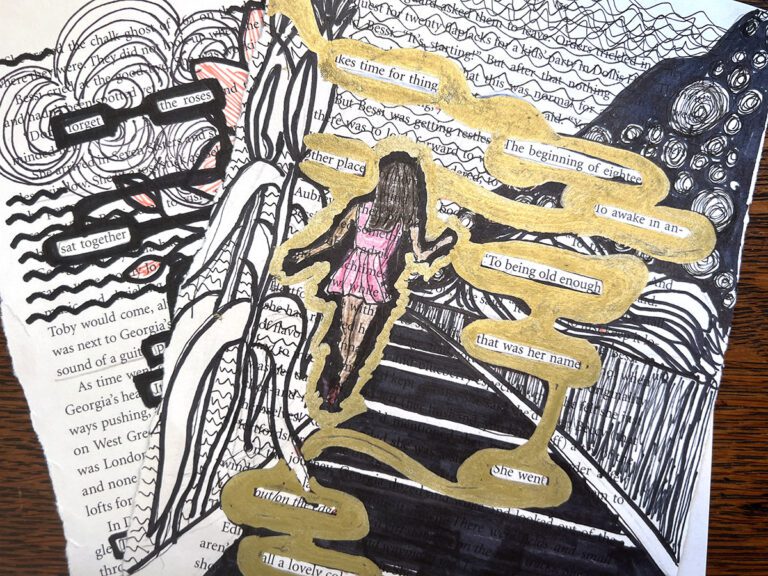So, who painted the Mona Lisa anyway? Oh, how this question can be crushing for a passionate art educator. It is especially frustrating when it comes from a senior student. You might ask how this student can go through years of art education and not know!? Although students are exposed to tremendous amounts of visual media daily, there are still gaps in their knowledge of art history. As art teachers, we have to intentionally implement art history in the classroom.
One solution is to break down art history into weekly chunks and create Weekly Art History Challenges.
Here’s how it works:
1. Choose an artist.
Give students a new artist to research each week as well as time to complete the research. It may be time at the end of class when they finish an assignment or one day a week to exclusively work on the Art History Challenge. The challenges should be simple, fun, fast, and self-directed.

2. Allow students to create the parameters.
Have students come up with the guidelines for the challenges. Let them decide what information they should learn about the artist. Let them choose how many images they should be able to recognize by the artist. The more the students feel in control of the assignment, the more they will be invested in the learning.
3. Include a mix of visuals and facts.

Students can use iPads or computers to research and create a digital collage. You can also utilize old art magazines, art books from the library, or search on the internet. Students can always sketch the artist’s work if they can not create a digital collage.
For classrooms with iPads and computer access, this is a great way to introduce layout and design apps like Canva. Tools like this give students options for layout and design templates. It also helps demonstrate important design concepts like hierarchy and use of text to emphasize focal points. Google Docs also works well for combining text and factual information. An app like Pic Collage can be used to gather images of the artist’s work and piece images together.
It is also important to teach students about citing sources. Sites like Citation Machine can help students with this process.
4. Assess their knowledge through play.
Games are always a great check for assessment, and students can also quiz each other. Challenge students to learn a set number of artists by the end of the quarter or semester as a tangible and attainable goal. Keep a tally sheet hung up in the room where students can brag about the number of artists they know.
 You can check for student understanding by having them create a Kahoot quiz for each artist. They can also play art history games like Famous Artist Jingo Game.
You can check for student understanding by having them create a Kahoot quiz for each artist. They can also play art history games like Famous Artist Jingo Game.
Invite in your principal, librarian, or history teacher to play with students. The students can see if they know more than the adults. It’s a fun way to share the knowledge your students are gaining in your classroom with your school.
You may consider rewarding students for visits to local museums. Encourage them to use library passes and visit museums on the weekends and during school vacations. This gives students the chance to see in person works of art they have studied.
Here’s an Art History Challenge example:
Objective: Identify, research, and understand the works of art created throughout history.
Instructions: Each week, you will research an artist and create a collage of their work.
Create a digital poster that includes four to five images of the artist’s works of art and the information below:
- The full name of the artist
- Dates of their birth and death
- Where they were born and lived
- What materials they used to create their art
- What style of art they created
Why it works:
- Students can manage their own time. Challenges can be completed if they finish work early or if they need a break from the current assignment.
- It is an excellent alternate assignment. For example, when a student with a cast on one arm shows up and can’t do your clay assignment, they can work on the Art History Challenges.
- Students can truly learn and form opinions about artists whose work they like or dislike. Students engage in conversations and help each other with research. They will become more adept at searching for artists, authentic material, and resources.
- The greatest benefit is that—if done weekly—students will have a greater depth and knowledge of artists and art history at the end of the year.
Weekly Art History Challenges have so many positive and lasting impacts! Now you can reference artists in your classroom and students will confidently know that artist. They will have an understanding of who they are and recognize the artists and their work. This kind of knowledge is something they can take and use even after they have left the art room.
What tips and techniques do you have for teaching art history?
How do you react when students don’t know who painted the Mona Lisa?
Magazine articles and podcasts are opinions of professional education contributors and do not necessarily represent the position of the Art of Education University (AOEU) or its academic offerings. Contributors use terms in the way they are most often talked about in the scope of their educational experiences.





